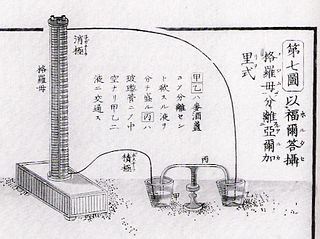 W
WIn modern Japanese, ateji principally refers to kanji used to phonetically represent native or borrowed words with less regard to the underlying meaning of the characters. This is similar to man'yōgana in Old Japanese. Conversely, ateji also refers to kanji used semantically without regard to the readings.
 W
WThe chōonpu , also known as chōonkigō (長音記号), onbiki (音引き), bōbiki (棒引き), or Katakana-Hiragana Prolonged Sound Mark by the Unicode Consortium, is a Japanese symbol that indicates a chōon, or a long vowel of two morae in length. Its form is a horizontal or vertical line in the center of the text with the width of one kanji or kana character. It is written horizontally in horizontal text and vertically in vertical text. The chōonpu is usually used to indicate a long vowel sound in katakana writing, rarely in hiragana writing, and never in romanized Japanese. The chōonpu is a distinct mark from the dash, and in most Japanese typefaces it can easily be distinguished. In horizontal writing it is similar in appearance to, but should not be confused with, the kanji character 一 ("one").
 W
WAn emoji is a pictogram, logogram, ideogram or smiley embedded in text and used in electronic messages and web pages. The primary function of emoji is to fill in emotional cues otherwise missing from typed conversation. Some examples of emoji are 😂, 😃, 🧘🏻♂️, 🌍, 🌦️,🍞, 🚗, 📞, 🎉, ❤️, 🍆, and 🏁. Emoji exist in various genres, including facial expressions, common objects, places and types of weather, and animals. They are much like emoticons, but emoji are pictures rather than typographic approximations; the term "emoji" in the strict sense refers to such pictures which can be represented as encoded characters, but it is sometimes applied to messaging stickers by extension. Originally meaning pictograph, the word emoji comes from Japanese e + moji ; the resemblance to the English words emotion and emoticon is purely coincidental. The ISO 15924 script code for emoji is Zsye.
 W
WFurigana is a Japanese reading aid, consisting of smaller kana or syllabic characters, printed either above or next to kanji or other characters to indicate their pronunciation. It is one type of ruby text. Furigana is also known as yomigana (読み仮名) and rubi in Japanese. In modern Japanese, it is usually used to gloss rare kanji, to clarify rare, nonstandard or ambiguous kanji readings, or in children's or learners' materials. Before the post-World War II script reforms, it was more widespread.
 W
WKanji are a set of logographic characters from Chinese script which forms a major part of the Japanese writing system alongside with Japanese syllabic scripts hiragana and katakana. The Japanese term kanji for the Chinese characters literally means "Han characters". It is written with the same characters as in traditional Chinese to refer to the character writing system, hanzi (漢字).
 W
WKyūjitai are the traditional forms of kanji, Chinese written characters used in Japanese. Their simplified counterparts are shinjitai (新字体), "new character forms". Some of the simplified characters arose centuries ago and were in everyday use in both China and Japan, but they were considered inelegant, even uncouth. After World War II, simplified character forms were made official in both these countries. However, in Japan fewer and less drastic simplifications were made: for example, "electric" is still written as "電" in Japan, as it is also written in Hong Kong, Macau, South Korea and Taiwan, which continue to use traditional Chinese characters, but has been simplified to 电 in mainland China. Prior to the promulgation of the tōyō kanji list in 1946, kyūjitai were known as seiji or seijitai (正字體). Even after kyūjitai were officially marked for discontinuation with the promulgation of the tōyō kanji list, they were used in print frequently into the 1950s due to logistical delays in changing over typesetting equipment. Kyūjitai continue in use to the present day because when the Japanese government adopted the simplified forms, it did not ban the traditional forms. Thus, traditional forms are used when an author wishes to use them and the publisher agrees.
 W
WIn Japanese language, Ryakuji are colloquial simplifications of kanji.
 W
WShinjitai are the simplified forms of kanji used in Japan since the promulgation of the Tōyō Kanji List in 1946. Some of the new forms found in shinjitai are also found in Simplified Chinese characters, but shinjitai is generally not as extensive in the scope of its modification.
 W
WYojijukugo is a Japanese lexeme consisting of four kanji. English translations of yojijukugo include "four-character compound", "four-character idiom", "four-character idiomatic phrase", and "four-character idiomatic compound". It is equivalent to the Chinese chengyu.